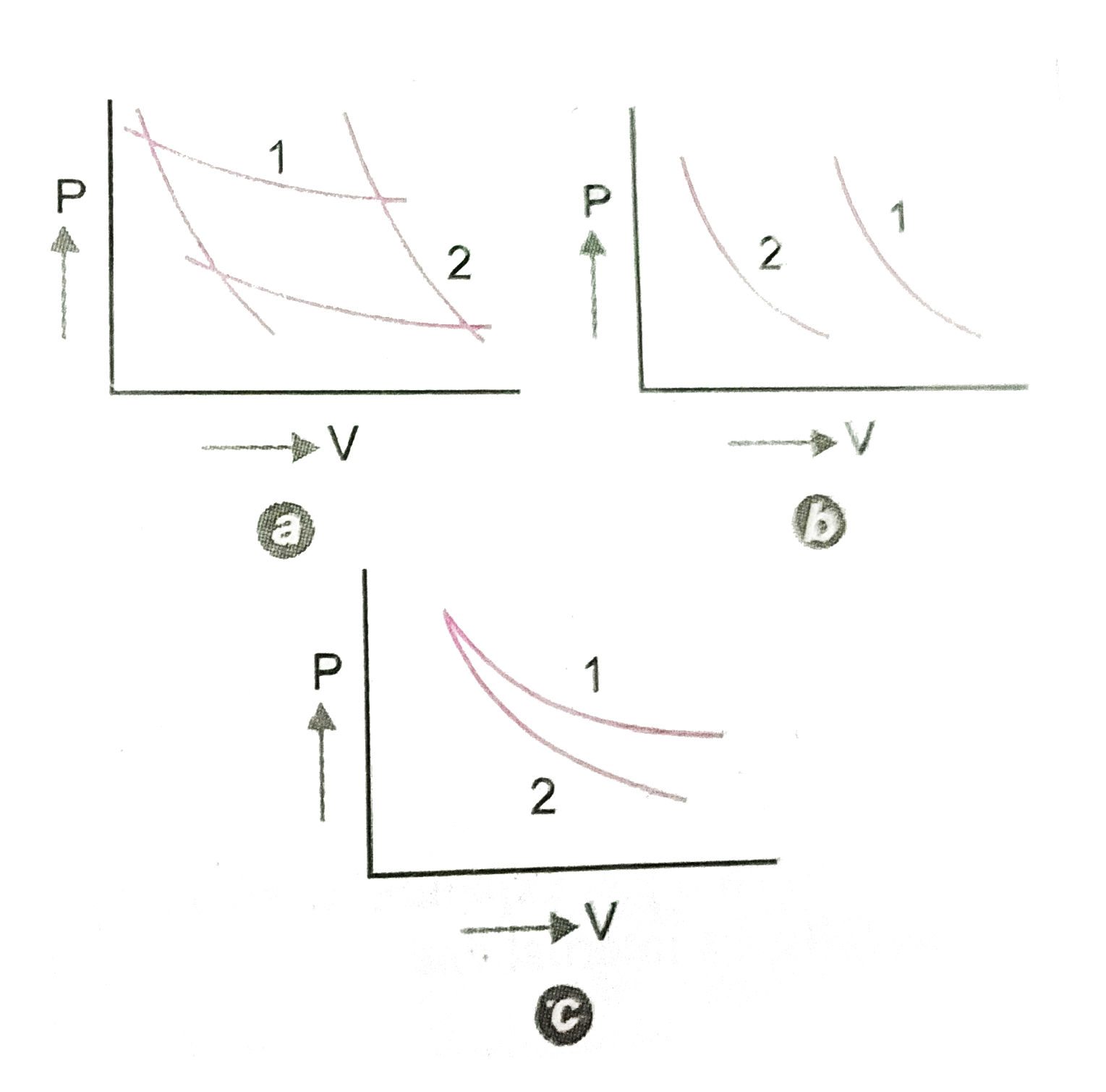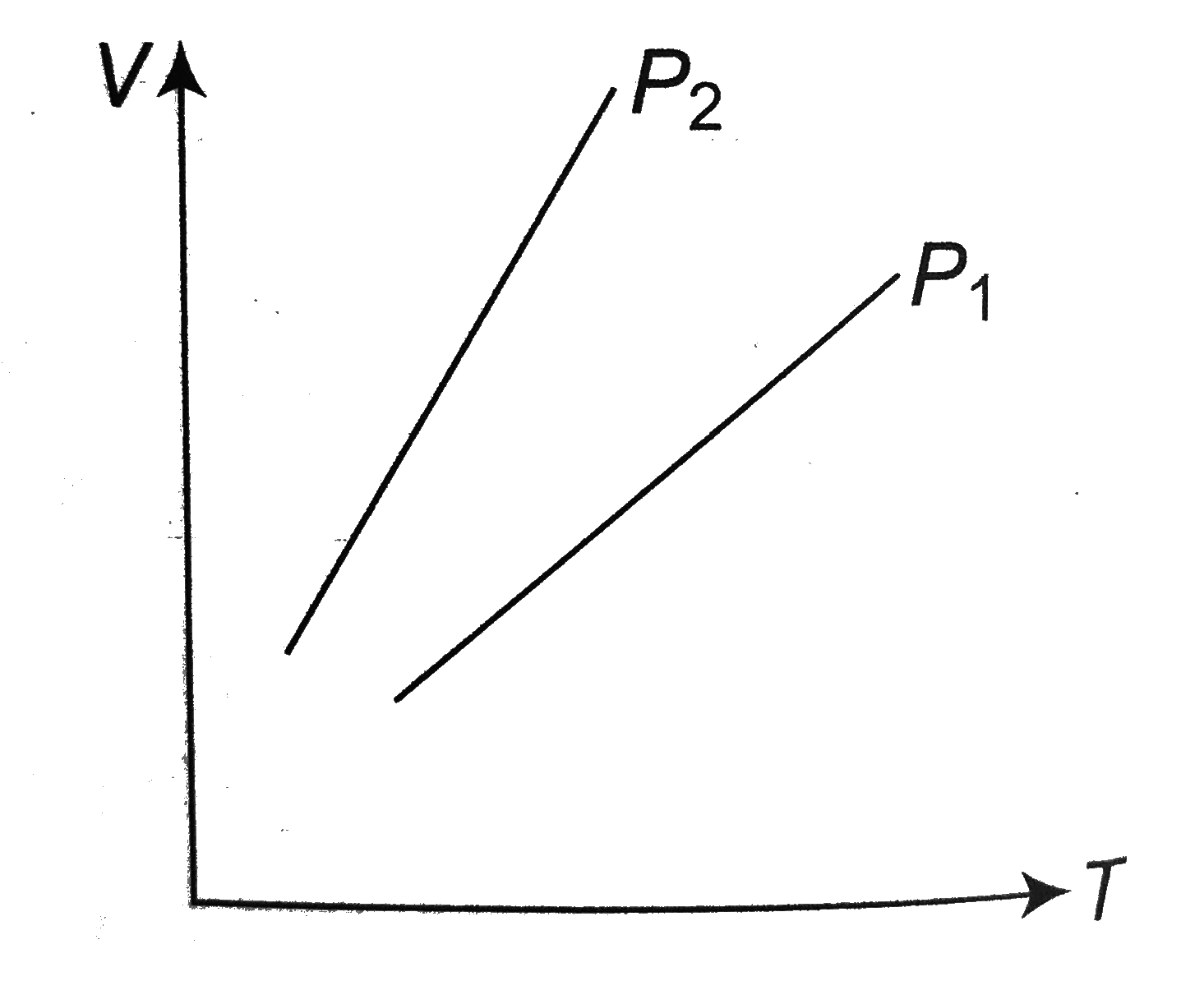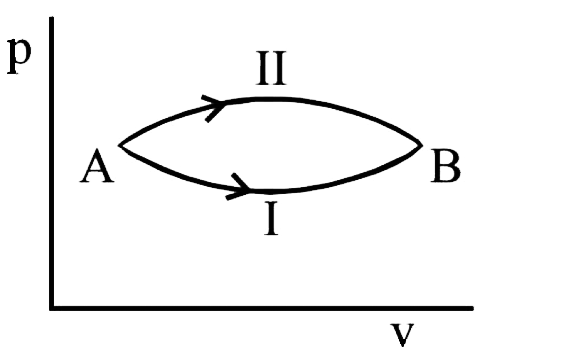Complete Solutions to Conceptual Problems of chapter THERMODYNAMICS of Class 11 book with complete answers and questions
| Class 11 | PHYSICS |
| Chapter | THERMODYNAMICS |
| PRADEEP | Conceptual Problems |
| Number Of Questions | 22 |
| Academic Year | 2023-24 |
The volume of an ideal gas is `V` at pressure `P`. On increasing the pressure by `DeltaP`, change in volume of gas is `DeltaV_(1)`, under isothermal conditions and `DeltaV_(2)` under adiabatic conditions. Which is more and why?
View SolutionIdentify isothermal and adiabatic process in the following diagram

View SolutionFigure shows the volume versus temperature graph for the same mass of a gas (assumed ideal) corresponding to two different pressure `P_(1) and P_(2)`. Then

View SolutionCan water be boiled without heating?
View SolutionCan we increase the temperature of a gas without supplying heat to it?
View SolutionIs the heat supplied to a system always equal to the increase in its internal energy?
View SolutionIs the internal energy of a gas a function of the pressure? Explain.
View SolutionWhy is conversion of heat into work not possible without a sink at lower temperature?
View SolutionFirst law of thermodynamics does not forbid flow of heat from lower teperature to higher temperature. Comment.
View SolutionIf on giving `40 joul e ` of heat to a system, work done on the system is 10joul e`, what will be the change in internal energy of the system?
View SolutionHow does internal energy of a gas change in (i) isothermal expansion (ii) adiabatic expansion?
View SolutionA system goes from A and B via two processes. I and II as shown in figure. If `DeltaU_1 and DeltaU_2` are the changes in internal energies in the processes I and II respectively, then

View SolutionGive two examples of reversible processes. Discuss their reversibility?
View SolutionA refrigerator transfers heat from the cold coling coils to the warm surroundings. Is it against the second law of thermodynamics? Justify your answer?
View SolutionCan the Carnot engine be realised in practice?
View SolutionNo real engine can have an efficiency greater than that of a carnot engine working between the same two temperatures, why?
View SolutionA heat engine coverts disordered mechanical motion into ordered mechanical motion. Comment.
View SolutionWhat is meant by reversible process? Explain why the efficiency of a reversible engine is maximum?
View SolutionWhy can a ship not use the internal energy of sea water to operate its engine?
View SolutionWhat is the significance of area of closed curve on P-V diagrams?
View SolutionCan the work done during a cyclic process be zero?
View SolutionHeat equivalent to `30J` is supplied to a thermodynamic system and `10 J` of work is done on the system. What is change in its internal energy?
View Solution
Conceptual Problems questions and complete solutions for chapter THERMODYNAMICS of PRADEEP PHYSICS (HINGLISH) of Class 11
All Exercises from PRADEEP Class 11 PHYSICS THERMODYNAMICS
- Advanced problems for competitions
- Assertion- Reason Type Questions
- Conceptual Problems
- Curiosity Question
- Higher order thinking skills
- Interger Type questions
- Long answer questions
- Long answer questions(NCERT)
- Multiple choice questions
- Multiple choice questions (NCERT)
- Multiple choice questions.
- NCERT Questions
- Problems for practice
- Sample problems
- Short answer questions
- Short answer questions(NCERT)
- Solved examples
- Value based Questions
- Very short answer questions
- Very short answer questions(NCERT)